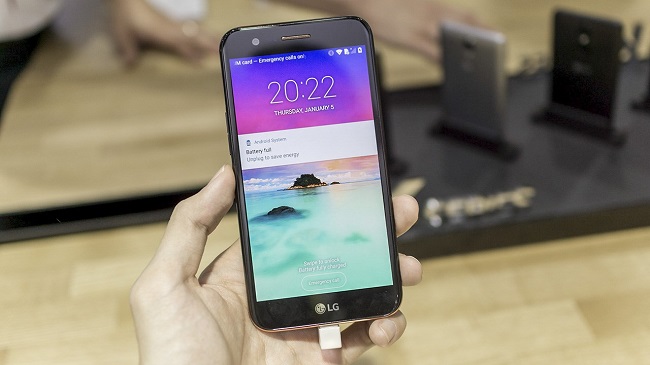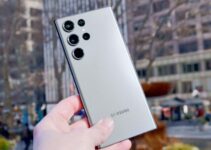LG is another market leader in the smartphone industry that has been there for quite some time. At its best, their flagship phones can compete with those of Samsung, Apple, or any other manufacturer.
All You Need To Know About the LG K10
LG has been at the forefront of technological advancement for so long that it seems odd when their smartphones don’t provide some novel feature. Whether or not the specifications are a surprise, LG always delivers smartphones that are both reliable and powerful.

LG’s latest ideas aren’t always an instant hit with consumers. New innovations are initially exclusive to one brand, but they quickly spread to others. This standard of quality and innovation is carried through to LG’s “standard” smartphones. It seems like they never put out anything that isn’t impressive.
LG K10, Now Available
The K10 represents a departure in style for LG. Each series will typically have its own unique design and set of features. The K10 is a mid-tier smartphone that manages to look just like the company’s high-end G line.
But, the display is a glaring exception. Its 5.3-inch screen is the largest among LG’s non-phablet devices. Most of all, it’s on a device that’s not even close to the 6′′ overall size threshold that necessitates rethinking how we use and operate a smartphone. It’s incredible that such a screen can fit on a device of this little stature.
Is that sufficient, though? Is it enough to simply have a large display these days? The truth is that unfortunately not. These days, we expect a lot from our cellphones and spend more time on activities like social media than we do with traditional media consumption methods like watching movies or videos online.
You can’t just slap a glossy finish on it and hope it sells. The remaining components of the whole need to keep up. We requested our staff to investigate what was going on below the K10 and let us know if it was successful. So now you know their opinion.
Evaluations of the LG K10
The LG K10 has a 4.5 out of 5 overall rating from our reviewers. This is due to the fact that each subcategory below has its own score:
- Plan (4.6 out of 5)
- Build (4.5/5)
- Rating: 4.3/5
- Video recording equipment (4.6/5)
- Devices (4.5/5)
- Ranking of software: 4.3 out of 5
Our initial concerns that the rest of the K10 wouldn’t live up to the big, dramatic display were quickly put to rest. It’s possible that the K10 is the best “crossover” device we’ve ever tested. It’s the perfect size for use as a multimedia device while still being extremely portable, falling between the categories of smartphones and phablets.
LG K10 Detailed Features
| Size | 5.75 x 2.94 x 0.35 in |
| Weight | 5.01 oz |
| Display Size | 5.3” |
| Display Resolution | 720 x 1280 px |
| Cameras | 8MP / 5MP |
| Internal Storage | 16GB |
| MicroSD Card Slot | Yes – Up to 32GB |
| Battery Life | 13 hours talk time / 20 days Standby |
| 4G | Yes |
LG K10 Design and Fabrication
At the K10’s introduction, we mentioned that LG borrowed heavily from the design of their flagship G series devices, particularly the G4. The K10’s larger-than-average size necessitates a somewhat rounded back casing, and this serves to achieve that.
LG has done an incredible job of keeping the weight down to about 5 oz despite the size of the display. Despite its plastic construction, the device has a high-end feel and appears more sturdy than its weight would indicate.
The K10’s mild ARC of 2.5 degrees eliminates any visible seams, substantially enhancing the phone’s aesthetic value. We’re big fans of LG’s “pebble” design, which has been successful for the company’s mobile devices.
There’s no denying that the K10 is one stylish mobile device. At the time of its release, LG said that it aimed the K10 at a younger audience because it saw potential in the device as a media player. We can’t say for sure if it will be appropriate for children, but that’s beside the point. The K10 gives no indication that it is anything other than an advanced smartphone designed for adults.
Display
If you were to directly ask us what kind of resolution we’d hope to see on a 5.3-inch screen, our answer would always be 1080p Full HD. Because of this, we were taken aback by the K10’s impressive screen before learning that it had “just” 720 by 1280 pixels.
Even now, 720p is the standard resolution for most devices. With the rapid development of display technology, we can also see that display resolutions are no longer game-changing. A 4K display is fantastic, but anything less than that usually depends more on the implementation than the number of pixels.
Putting a 4K video through the K10 produced spectacular results. Although it is not essential on a 720p screen, we test the phone’s performance by playing a 4K video. What the K10 was able to accomplish. The standard definition (SD) 640 x 480 px video format was also tested. K10 up-scaling improved the low-res image beyond what would have been expected.
LG has done an excellent job with the K10’s display, however it was achieved. If you’re wondering why the display didn’t get a better grade, it’s because of a couple minor issues. For instance, we discovered that even extremely high contrast photographs lost only a little bit of clarity.
Although it is quite unlikely that you will ever need to take such a photograph, we do use it as part of our display testing. In most cases, the screen is excellent. The absence of an ambient light sensor is another drawback. It’s a minor detail, but it might make a difference.
Cameras:
The K10 has an 8MP rear camera and a 5MP front-facing camera. Both capture stunning photos that blow away the competition with vivid hues and razor-sharp details. But, the LG-provided app is where the cameras truly shine.
Sometimes apps include a Tonne of features that nobody ever uses. LG has loaded the app to the gills with features that aren’t just nice to have, but could prove to be needed. Both cameras can capture Full HD video at 1080p resolution, and both allow you to pause recording and snap a photo without having to start over.
These features are becoming more common on smartphones, albeit they are often only available for the rear camera. To be clear, it’s fantastic news that they’re on both platforms. Geotagging is a feature of both cameras.
While you’re on the road, it’s not always easy to put a finger on where you were on any particular day. Using GeoTagging, the camera also stores the location at the time of capture. There is more than one way to capture an image. You can use your voice, the volume button, or the on-screen shutter button.
We were doubtful that speech recognition for photography would even be possible at first. It’s not only useful, but we wish all smartphones had that capability. You may use gestures to take images and take use of the “white screen” selfie light with the front-facing camera. All of this is going to be great for the cameras.
Hardware:
The quad-core processor holds up remarkably well, even under heavy load. 1.5 GB of RAM is present, which is sufficient. The device has 16GB of built-in storage and a MicroSD card slot for up to 32GB more.
The battery life is likewise excellent, lasting up to 20 days in standby and 13 hours in talk time. The K10’s battery life only began to noticeably decrease after we subjected it to significantly more stress than it would experience in typical use.
LG K10 Software:
LG’s excellent UX 5.0 comes preinstalled on the K10. It improves the Android setup in a number of ways, including security and more. QuickMemo is an LG function that allows you to annotate any display with notes or sketches.
You can also store items in the clip tray at the bottom of the screen and access them at any time. It’s a convenient way to save and share a bunch of data or information via message or email.


